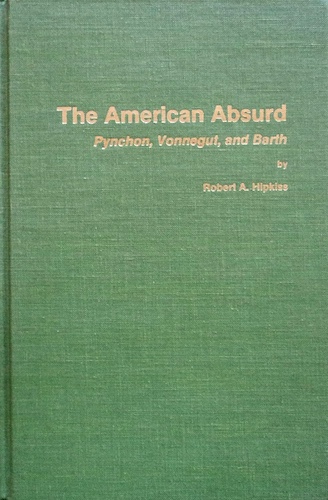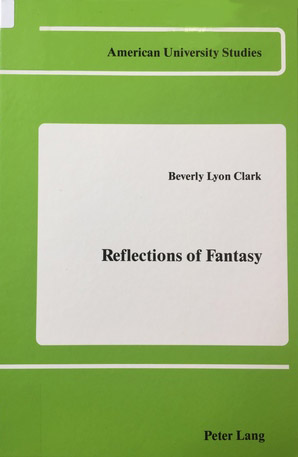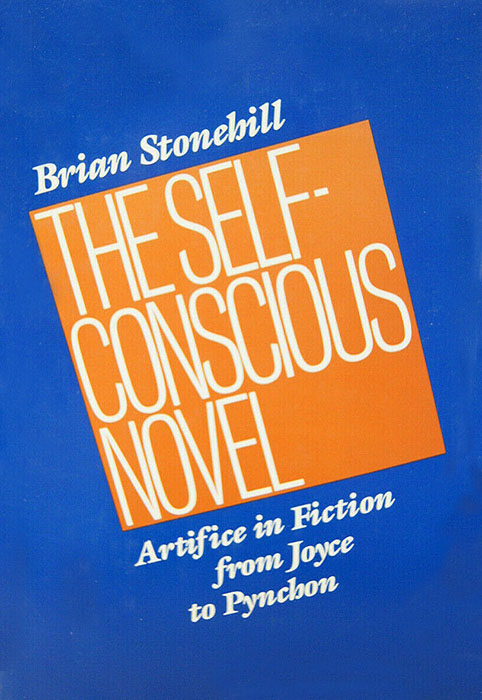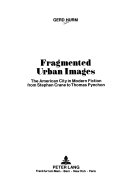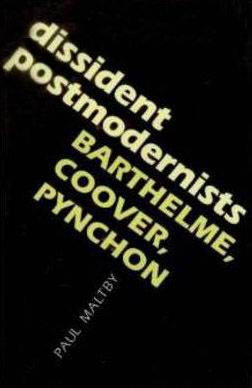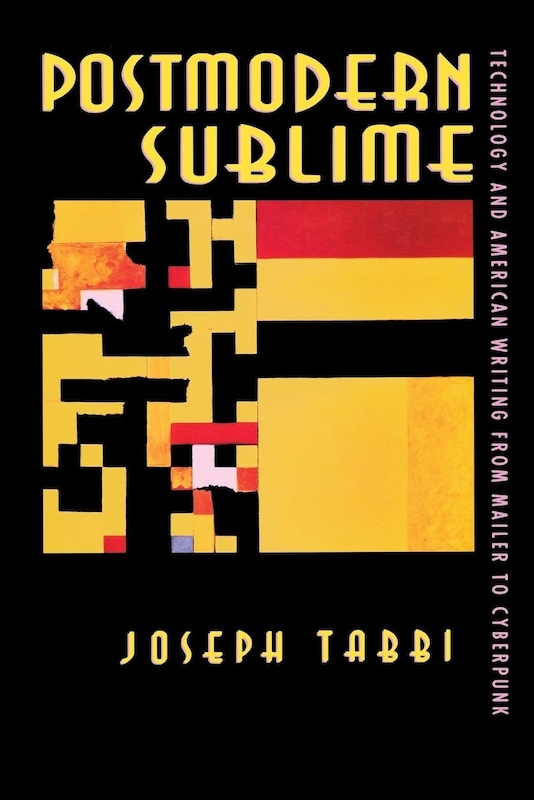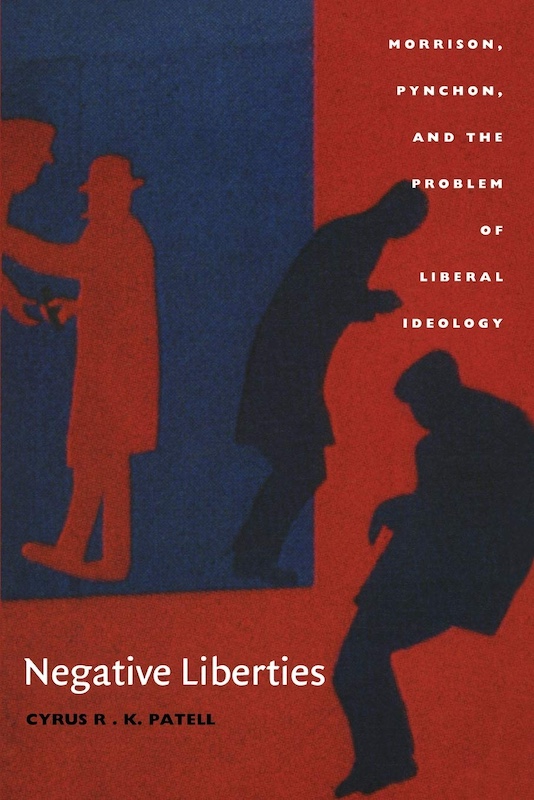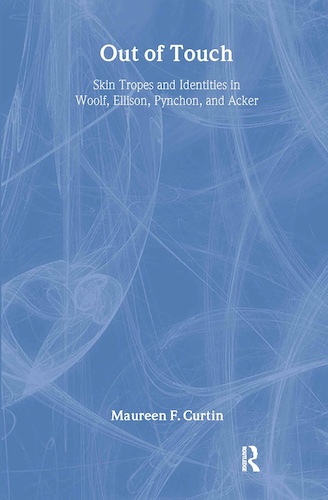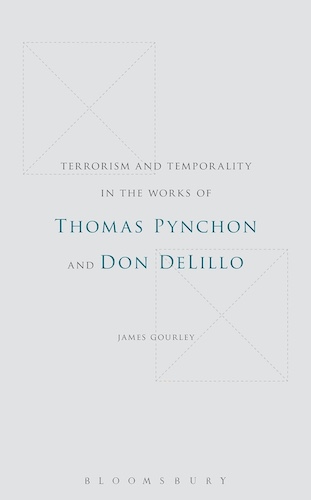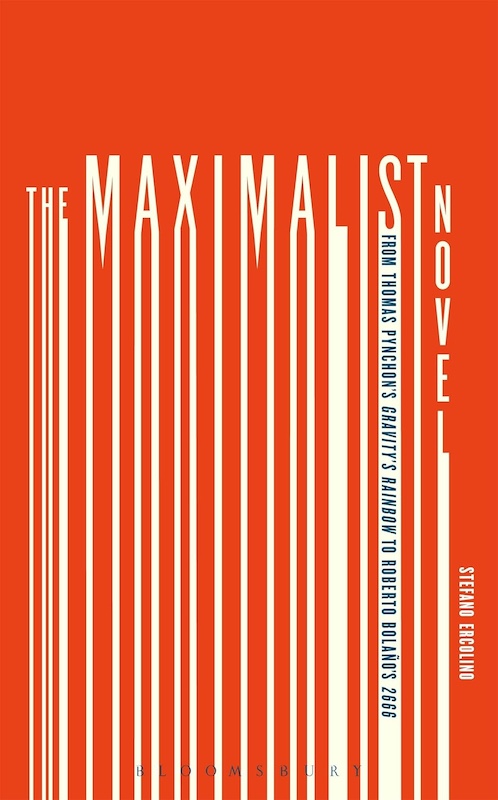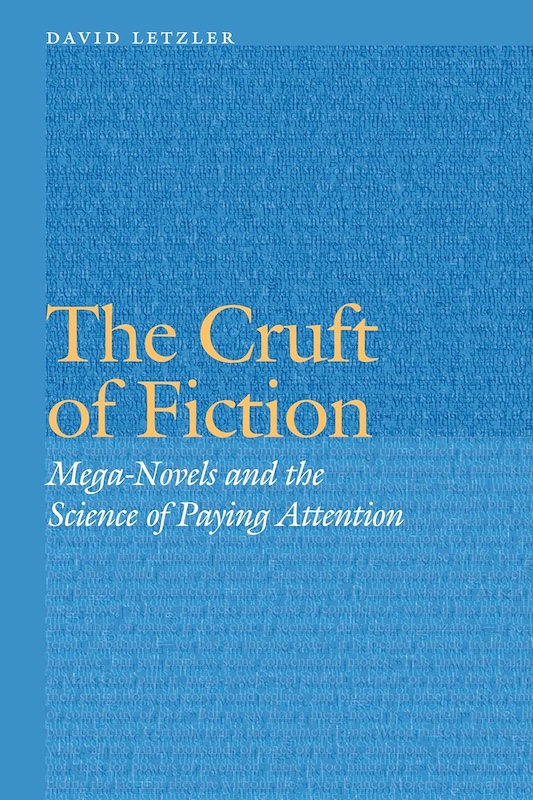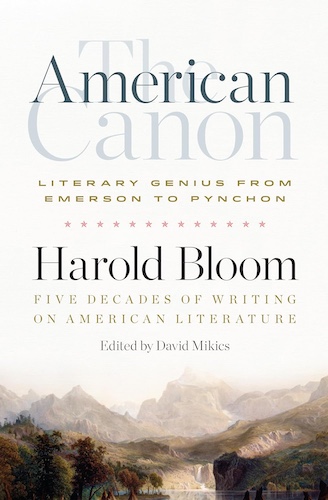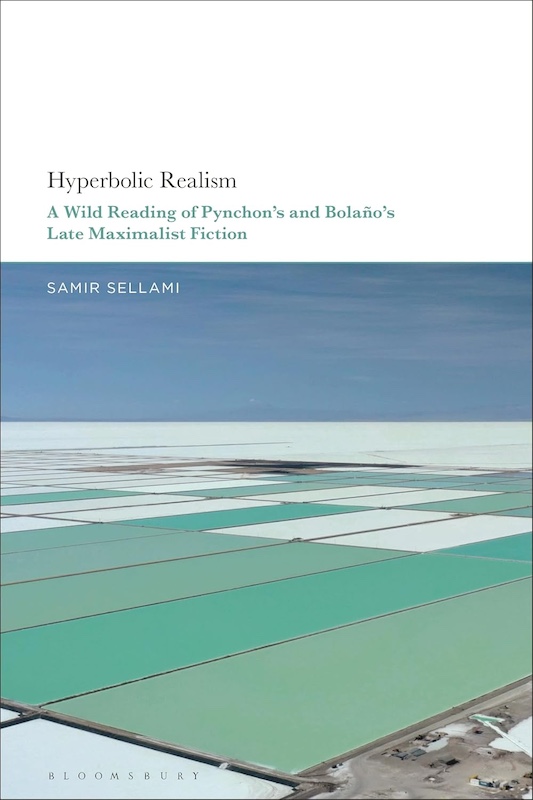Pynchon Criticism: Contextual Criticism
- At January 01, 2021
- By Spermatikos Logos
- In Pynchon, The Modern Word
 0
0
All the way back to the Visto, Mason is seiz’d by Monology. “Text,—” he cries, and more than once, “it is Text,—and we are its readers, and its Pages are the Days turning. Unscrolling, as a Pilgrim’s Itinery map in ancient Days…”
—“Mason & Dixon”
Pynchon Criticism: Contextual Criticism
This page collects essays and analysis that places Pynchon in context of other writers and movements. Most of the books profiled in this section are accompanied by a brief description, a summary of contents, and the official publisher’s blurb. If any visitor would like to contribute informed commentary for any of these works, please contact Spermatikos Logos! The books are listed in chronological order of publication. Clicking the image of a book takes you directly to Amazon.
American Absurd: Pynchon, Vonnegut, and Barth
Associated Faculty Press Inc, 1984.
Released as part of series in “Modern and Contemporary Literature.” We have no additional information about this book, and welcome any elaboration or reviews.
Reflections of Fantasy: The Mirror-Worlds of Carroll, Nabokov, and Pynchon
Peter Lang, 1986.
This book is an expansion of Clark’s PhD thesis for Brown University, “The Mirror Worlds of Carroll, Nabokov, and Pynchon: Fantasy in the 1860’s and 1960’s, 1979.”
Publisher’s Description: In Victorian England non-realistic fiction was largely forced underground, with Alice, into such marginal fiction as fantasy for children. Only now is fantasy beginning to receive the attention it deserves, in both fiction and literary criticism. Beverly Lyon Clark’s Reflections of Fantasy extends recent theoretical work on fantasy by exploring the technique of the mirror-world. Tracing the fantasy mirror-world in Carroll, Nabokov, and Pynchon allows Clark to shed light on the dialectic central to fantasy, that between the real and the not-real, and also on Victorian and contemporary views of fictional reality, on the use of metaphoric and metonymic modes, on the ramifications of self-consciousness. She explores these themes in analyses of Alice’s Adventures in Wonderland, Through the Looking-Glass, [Nabokov’s Russian translation of Alice] Anya v stranye chudes, Pale Fire, Ada, and The Crying of Lot 49.
The Self-Conscious Novel: Artifice in Fiction from Joyce to Pynchon
University of Pennsylvania Press, 1988.
An important work in postmodern literature studies, The Self-Conscious Novel was reviewed by Marvin Magalaner in Modern Fiction Studies, Volume 34, Number 4, Winter 1988. An excerpt of Magalaner’s review offers a taste of Stonehill’s book:
Brian Stonehill’s book on The Self-conscious Novel will be welcomed by students seeking to impose some order and definition on the increasingly impenetrable output of the postmodernists now flowing into the literary marketplace. With its sensible analysis and its ordered categories of the characteristics of “self-conscious” fiction, it provides a guide of sorts through the jungle. That it does so through a short but rigorous examination of the work of five preeminent novelists—James Joyce, Vladimir Nabokov, William Gaddis, Thomas Pynchon, and John Barth—adds to the value of the undertaking… After a look at the “self-conscious” tradition of Sterne, Beckett, Borges, Gide, and even Proust, Stonehill examines Joyce’s Ulysses in some detail to demonstrate that “a self-conscious emphasis on artifice strives essentially to assert the presence of the performing artist.” He does this by analyzing the “Aeolus” and “Oxen of the Sun” episodes. He finds that in the former Joyce works through the manipulation of time cycles, the employment of palindrome, and the frequent use of abrupt shifts of setting, reinforcing the strength of literary artifice and dramatizing the author’s role as artist. In “Oxen,” as Stonehill sees it, the idea is to multiply the narrators in order to call attention to the composition of the fiction itself by the artist. Further, because the narrators speak each in a different, recognizable English prose style (extending from Anglo-Saxon to modern slang), the author is able to embrace self-consciously the whole of English style and language as his property. If the aim is to impress upon the reader that the author is an artist, this critic argues, then Joyce’s effort succeeds admirably. In a long and enlightening chapter on the devices Nabokov as author employs (“narrators visibly engaged in the act of composition,” or repeated references to the text in the text, for instance), Stonehill seeks to account for Nabokov’s artistic triumph and finds it in his ability to create a fictional world at a remove from the world of the reader—but to endow that fictional world with the details of “real” life. Necessarily, the treatment of Gaddis, Pynchon, and Barth in a short study is less ambitious but no less thoughtful. The book, in its range and conception, is extremely useful to students of the novel.
Contents:
1. Imitation’s Limitations; or, Why Writers Write About Writers Writing
2. The Repertoire of Reflexivity
3. The Self-Conscious Tradition
4. Getting Back at James Joyce
5. Nabokov’s Imitations of Mortality
6. Plagiarizing the Recognitions
7. Paradoxical Pynchon; or, The Real World Inside Gravity’s Rainbow
8. A Trestle of Letters
9. The Criticism of Self-Consciousness
10. Reflexive Commentary in the Form of a Conclusion
2. The Repertoire of Reflexivity
3. The Self-Conscious Tradition
4. Getting Back at James Joyce
5. Nabokov’s Imitations of Mortality
6. Plagiarizing the Recognitions
7. Paradoxical Pynchon; or, The Real World Inside Gravity’s Rainbow
8. A Trestle of Letters
9. The Criticism of Self-Consciousness
10. Reflexive Commentary in the Form of a Conclusion
Fragmented Urban Images: The American City in Modern Fiction from Stephen Crane to Thomas Pynchon
Peter Lang Publishing, 1991.
From the “Neue Studien zur Anglistik und Amerikanistik” series.
Publisher’s Description: Fragmented Urban Images fuses urban studies and literary criticism to examine the city image in American fiction in the twentieth century. The study proposes a reassessment of the complex interaction between society, city, and novel. It focuses particularly on the ways in which the diversity of fragmented experience and the ideological bias in the assessment of urban condition reappear in the modernist city images. The study finds that, contrary to appearances, cities can hardly be called agents in modernity. As expressions of fundamental divisions in society, they are crucial catalysts, however. Eight influential city novels are interpreted to provide a distinct view of the interrelation between fragmented experience, fictional perception, and urban thought in modernity: Maggie: A Girl of the Streets by Stephen Crane, Sister Carrie by Theodore Dreiser, The Jungle by Upton Sinclair, The Great Gatsby by F. Scott Fitzgerald, Manhattan Transfer by John Dos Passos, Native Son by Richard Wright, Last Exit to Brooklyn by Hubert Selby, and The Crying of Lot 49 by Thomas Pynchon.
Dissident Postmodernists: Barthelme, Coover, Pynchon
University of Pennsylvania Press, 1991.
Publisher’s Description: Critics who hold that postmodernist art is essentially adversarial and apolitical have ignored the historical context of the postmodern focus on the problems of language. Paul Maltby examines a major current of postmodernist fiction that can be read as a dissident response to developments of late capitalism that have transformed the field of language and communication.
Postmodern Sublime: Technology and American Writing from Mailer to Cyberpunk
Cornell University Press, 1995.
Professor and novelist Tom LeClair’s review is part of the official press materials, and offers a nice overview of Tabbi’s book:
Tabbi’s major contribution is resurrecting a concept of the sublime―which creates a new intellectual arc from Henry Adams to Kathy Acker and an interesting new grouping of American novelists. The chapters on McElroy’s Plus and DeLillo’s Libra and Mao II are the best criticism I know of these books, and Tabbi’s original readings of Gravity’s Rainbow and An American Dream make it hard to think about Pynchon and Mailer in the same way as before.
Publisher’s Description: Focusing on works by Norman Mailer, Thomas Pynchon, Joseph McElroy, and Don DeLillo, Joseph Tabbi finds that a simultaneous attraction to and repulsion from technology has produced a powerful new mode of modern writing―the technological sublime.
Negative Liberties: Morrison, Pynchon, and the Problem of Liberal Ideology
Duke University Press, 2001.
Publisher’s Description: Since the nineteenth century, ideas centered on the individual, on Emersonian self-reliance, and on the right of the individual to the pursuit of happiness have had a tremendous presence in the United States—and even more so after the Reagan era. But has this presence been for the good of all? In Negative Liberties Cyrus R. K. Patell revises important ideas in the debate about individualism and the political theory of liberalism. He does so by adding two new voices to the current discussion—Toni Morrison and Thomas Pynchon—to examine the different ways in which their writings embody, engage, and critique the official narrative generated by U.S. liberal ideology. Pynchon and Morrison reveal the official narrative of individualism as encompassing a complex structure of contradiction held in abeyance. This narrative imagines that the goals of the individual are not at odds with the goals of the family or society and in fact obscures the existence of an unholy truce between individual liberty and forms of oppression. By bringing these two fiction writers into a discourse dominated by Ralph Waldo Emerson, Isaiah Berlin, John Rawls, George Kateb, Robert Bellah, and Michael Sandel, Patell unmasks the ways in which contemporary U.S. culture has not fully shed the oppressive patterns of reasoning handed down by the slaveholding culture from which American individualism emerged. With its interdisciplinary approach, Negative Liberties will appeal to students and scholars of American literature, culture, sociology, and politics.
Out of Touch: Skin Tropes and Identities in Woolf, Ellison, Pynchon, and Acker
Routledge, 2002.
Contents:
- Introduction
- Chapter 1: Skin’s Eclipses in Virginia Woolf’s Mrs. Dalloway
- Chapter 2: Materializing Invisibility as X-Ray Technology: Skin Matters in Ralph Ellison’s Invisible Man
- Chapter 3: Skin Harvests: Automation and Chromatism in Thomas Pynchon’s “The Secret Integration” and Gravity’s Rainbow
- Chapter 4 Scratching the Sensory Surface in Kathy Acker’s Empire of the Senseless
- Conclusion
Ethical Diversions: The Post-Holocaust Narratives of Pynchon, Abish, DeLillo, and Spiegelman
Routledge, 2004.
Publisher’s Description: While conversion into politics has been a standard way of rescuing ethics from antiquated humanistic moralizing for some time now, the recent “ethical turn” of the humanities reclaims ethics as itself open to radical reimagination. The present study proposes that this revision of ethics can provide a new understanding of postmodern American works which both sensitize their narrative procedures to ethical problems and present themselves as post-holocaust texts. The emphasis is on the specifically postmodern dilemmas of ethicity and narrative (rather than Holocaust fiction as such), hence the choice of the four texts: Maus by Art Spiegelman, How German Is It by Walter Abish, White Noise by Don DeLillo, and Gravity’s Rainbow by Thomas Pynchon. The Introduction identifies the theoretical framework as a specific strand in recent ethical thought: theories of obligation which are direct or oblique responses (by Derrida, Blanchot, Lyotard and de Certeau among others) to the influential and controversial oeuvre of Emmanuel Levinas. What links these divergent theories is that they pose the question of ethics as a question of the other, they have a troubled relation with speculative reason, and they put an enormous burden on the singularity of the ethical moment, a discontinuous and incalculable event. Chapter 1 examines the ethics of monstrosity and memory in Maus—the excessive diversity of its hybrid forms (including the body) and its problematic meta-testimony: the work of transcription that testifies, ambiguously, for the other. Chapter 2 examines the self-problematizing narrative structures of How German Is It, where repetition, rewriting and forgetfulness yield a heteronomical ethics of obsession, which is then contrasted with the amnesic narrative of White Noise. Chapter 3 examines an ethics of liminality in Gravity’s Rainbow, where peripheral vision and transient responses to the liminal produce the text’s ethical performance as well as its erratic openings to the holocaust. The study offers new readings of the above texts, insufficiently recognized as post-holocaust, ethically engaged works. Furthermore, it elaborates a complex relation between post-holocaust sensibility and an ethics of alterity as modes of traumatic affliction, scrutinizing the ethical and aesthetic hazards of “plotting” trauma.
Terrorism and Temporality in the Works of Thomas Pynchon and Don DeLillo
Bloomsbury Academic, 2013.
Publisher’s Description: Terrorism and Temporality in the Works of Thomas Pynchon and Don DeLillo starts from a simple premise: that the events of the 11th of September 2001 must have had a major effect on two New York residents, and two of the seminal authors of American letters, Pynchon and DeLillo. By examining implicit and explicit allusion to these events in their work, it becomes apparent that both consider 9/11 a crucial event, and that it has profoundly impacted their work. From this important point, the volume focuses on the major change identifiable in both authors’ work; a change in the perception, and conception, of time. This is not, however, a simple change after 2001. It allows, at the same time, a re-examination of both authors work, and the acknowledgment of time as a crucial concept to both authors throughout their careers. Engaging with several theories of time, and their reiteration and examination in both authors’ work, this volume contributes both to the understanding of literary time, and to the work of Pynchon and DeLillo.
The Maximalist Novel: From Thomas Pynchon’s Gravity’s Rainbow to Roberto Bolano’s 2666
Bloomsbury Academic, 2014.
Publisher’s Description: The Maximalist Novel sets out to define a new genre of contemporary fiction that developed in the United States from the early 1970s, and then gained popularity in Europe in the early twenty-first century. The maximalist novel has a very strong symbolic and morphological identity. Ercolino sets out ten particular elements which define and structure it as a complex literary form: length, an encyclopedic mode, dissonant chorality, diegetic exuberance, completeness, narrratorial omniscience, paranoid imagination, inter-semiocity, ethical commitment, and hybrid realism. These ten characteristics are common to all of the seven works that centre his discussion: Gravity’s Rainbow by Thomas Pynchon, Infinite Jest by David Foster Wallace, Underworld by Don DeLillo, White Teeth by Zadie Smith, The Corrections by Jonathan Franzen, 2666 by Roberto Bolaño, and 2005 dopo Cristo by the Babette Factory. Though the ten features are not all present in the same way or form in every single text, they are all decisive in defining the genre of the maximalist novel, insofar as they are systematically co-present. Taken singularly, they can be easily found both in modernist and postmodern novels, which are not maximalist. Nevertheless, it is precisely their co-presence, as well as their reciprocal articulation, which make them fundamental in demarcating the maximalist novel as a genre.
The Cruft of Fiction: Mega-Novels and the Science of Paying Attention
University of Nebraska Press, 2017.
Publisher’s Description: What is the strange appeal of big books? The mega-novel, a genre of erudite tomes with encyclopedic scope, has attracted wildly varied responses, from fanatical devotion to trenchant criticism. Looking at intimidating mega-novel masterpieces from The Making of Americans to 2666, David Letzler explores reader responses to all the seemingly random, irrelevant, pointless, and derailing elements that comprise these mega-novels, elements that he labels “cruft” after the computer science term for junk code. In The Cruft of Fiction, Letzler suggests that these books are useful tools to help us understand the relationship between reading and attention. While mega-novel text is often intricately meaningful or experimental, sometimes it is just excessive and pointless. On the other hand, mega-novels also contain text that, though appearing to be cruft, turns out to be quite important. Letzler posits that this cruft requires readers to develop a sophisticated method of attentional modulation, allowing one to subtly distinguish between text requiring focused attention and text that must be skimmed or even skipped to avoid processing failures. The Cruft of Fiction shows how the attentional maturation prompted by reading mega-novels can help manage the information overload that increasingly characterizes contemporary life.
A Desire Called America: Biopolitics, Utopia, and the Literary Commons
Fordham University Press, 2019.
Publisher’s Description: Critics of American exceptionalism usually view it as a destructive force eroding the radical energies of social movements and aesthetic practices. In A Desire Called America, Christian P. Haines confronts a troubling paradox: Some of the most provocative political projects in the United States are remarkably invested in American exceptionalism. Riding a strange current of U.S. literature that draws on American exceptionalism only to overturn it in the name of utopian desire, Haines reveals a tradition of viewing the United States as a unique and exemplary political model while rejecting exceptionalism’s commitments to nationalism, capitalism, and individualism. Through Walt Whitman, Emily Dickinson, William S. Burroughs, and Thomas Pynchon, Haines brings to light a radically different version of the American dream―one in which political subjects value an organization of social life that includes democratic self-governance, egalitarian cooperation, and communal property. A Desire Called America brings utopian studies and the critical discourse of biopolitics to bear upon each other, suggesting that utopia might be less another place than our best hope for confronting authoritarianism, neoliberalism, and a resurgent exclusionary nationalism.
The American Canon: Literary Genius from Emerson to Pynchon
Library of America, 2019.
Publisher’s Description: Assembled with David Mikics (Slow Reading in a Hurried Age), this unprecedented collection gathers five decades’ worth of Bloom’s writings— much of it hard to find and long unavailable—including essays, occasional pieces, and introductions as well as excerpts from his books. It offers deep readings of 47 essential American writers, reflecting on the surprising ways they have influenced each other across more than two centuries. The story it tells, of American literature as a recurring artistic struggle for selfhood, speaks to the passion and power of the American spirit. All of the visionary American writers who have long preoccupied Bloom―Emerson and Whitman, Hawthorne and Melville, and Dickinson, Faulkner, Crane, Frost, Stevens, and Bishop―make their appearance in The American Canon, along with Hemingway, James, O’Connor, Ellison, Hurston, Le Guin, Ashbery and many others. Bloom’s passion for these classic writers is contagious, and he reminds readers how they have shaped our sense of who we are, and how they can summon us to be better versions of ourselves. Bloom, Mikics writes, “is still our most inspirational critic, still the man who can enlighten us by telling us to read as if our lives depended on it: Because, he insists, they do.”
Hyperbolic Realism: A Wild Reading of Pynchon’s and Bolaño’s Late Maximalist Fiction
Bloomsbury Academic, 2022
Publisher’s Description: What comes after postmodernism in literature? Hyperbolic Realism engages the contradiction that while it remains impossible to present a full picture of the world, assessing reality from a planetary perspective is now more than ever an ethical obligation for contemporary literature. The book thus examines the hyperbolic forms and features of Thomas Pynchon’s Against the Day and Roberto Bolaño’s 2666—their discursive and material abundance, excessive fictionality, close intertwining of fantastic and historical genres, narrative doubt and spiraling uncertainty—which are deployed not as an escape from, but a plunge into reality. Faced with a reality in a permanent state of exception, Pynchon and Bolaño react to the excesses and distortions of the modern age with a new poetic and aesthetic paradigm that rejects both the naive illusion of a return to the real and the self-enclosed artificiality of classical postmodern writing: hyperbolic realism.
Pynchon Criticism:
[Main Page | General 1974–1999 | General 2000–Present | V. | Crying of Lot 49 | Gravity’s Rainbow | Mason & Dixon | Against the Day | Shorter Works | Contextual | Bibliography]
[Main Page | General 1974–1999 | General 2000–Present | V. | Crying of Lot 49 | Gravity’s Rainbow | Mason & Dixon | Against the Day | Shorter Works | Contextual | Bibliography]
Author: Allen B. Ruch
Last Modified: 3 September 2024
Main Pynchon Page: Spermatikos Logos
Contact:quail(at)shipwrecklibrary(dot)com
Last Modified: 3 September 2024
Main Pynchon Page: Spermatikos Logos
Contact:quail(at)shipwrecklibrary(dot)com


